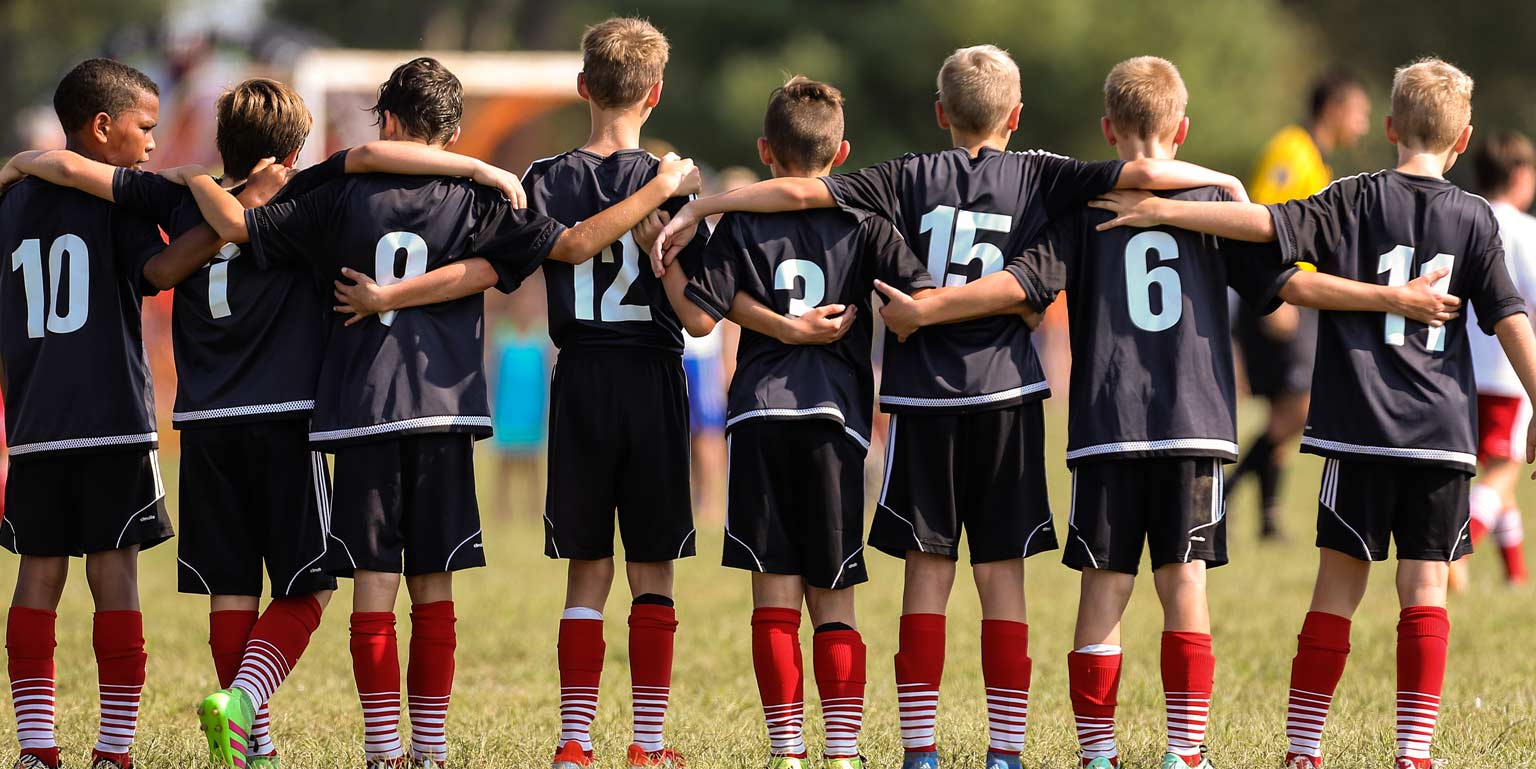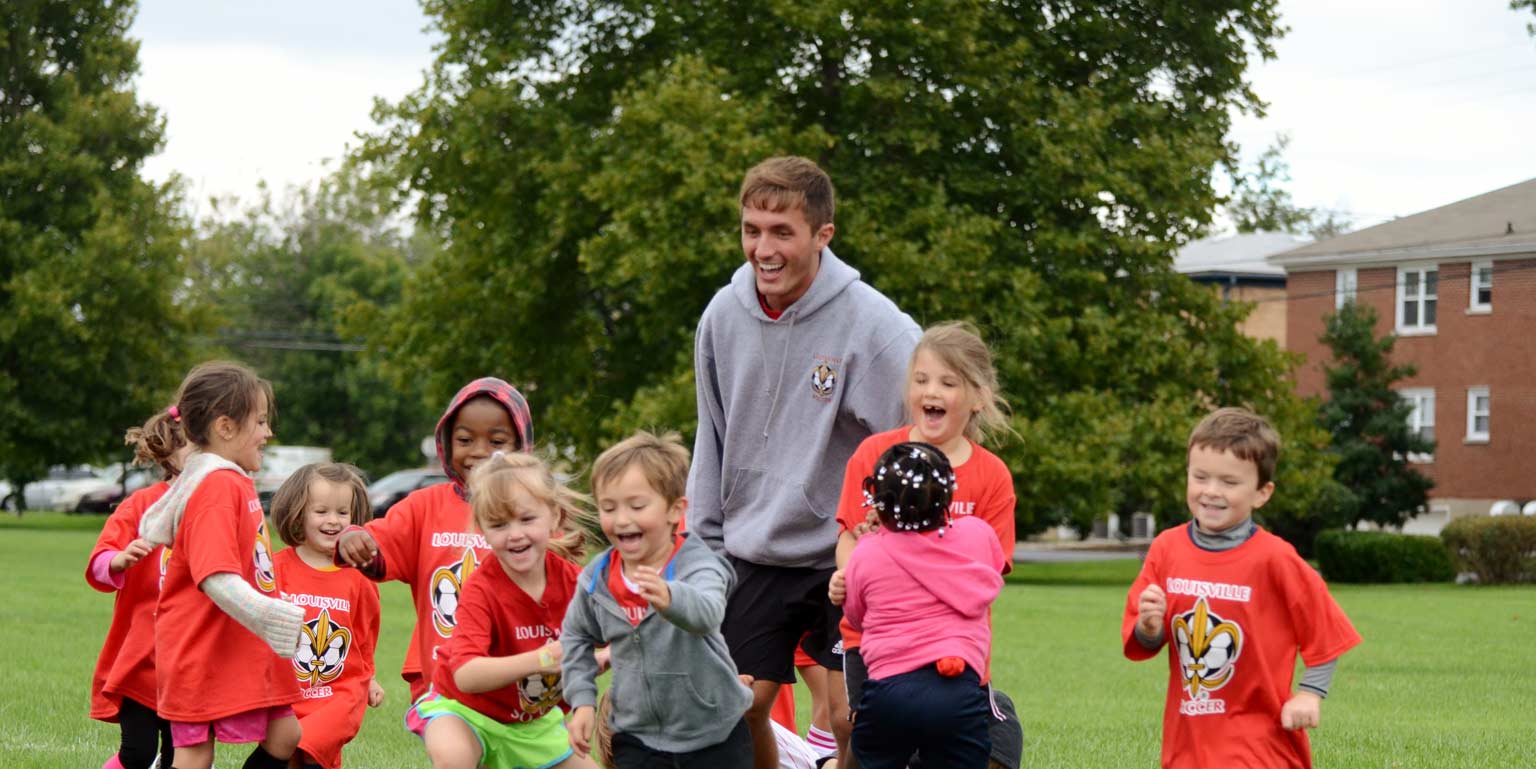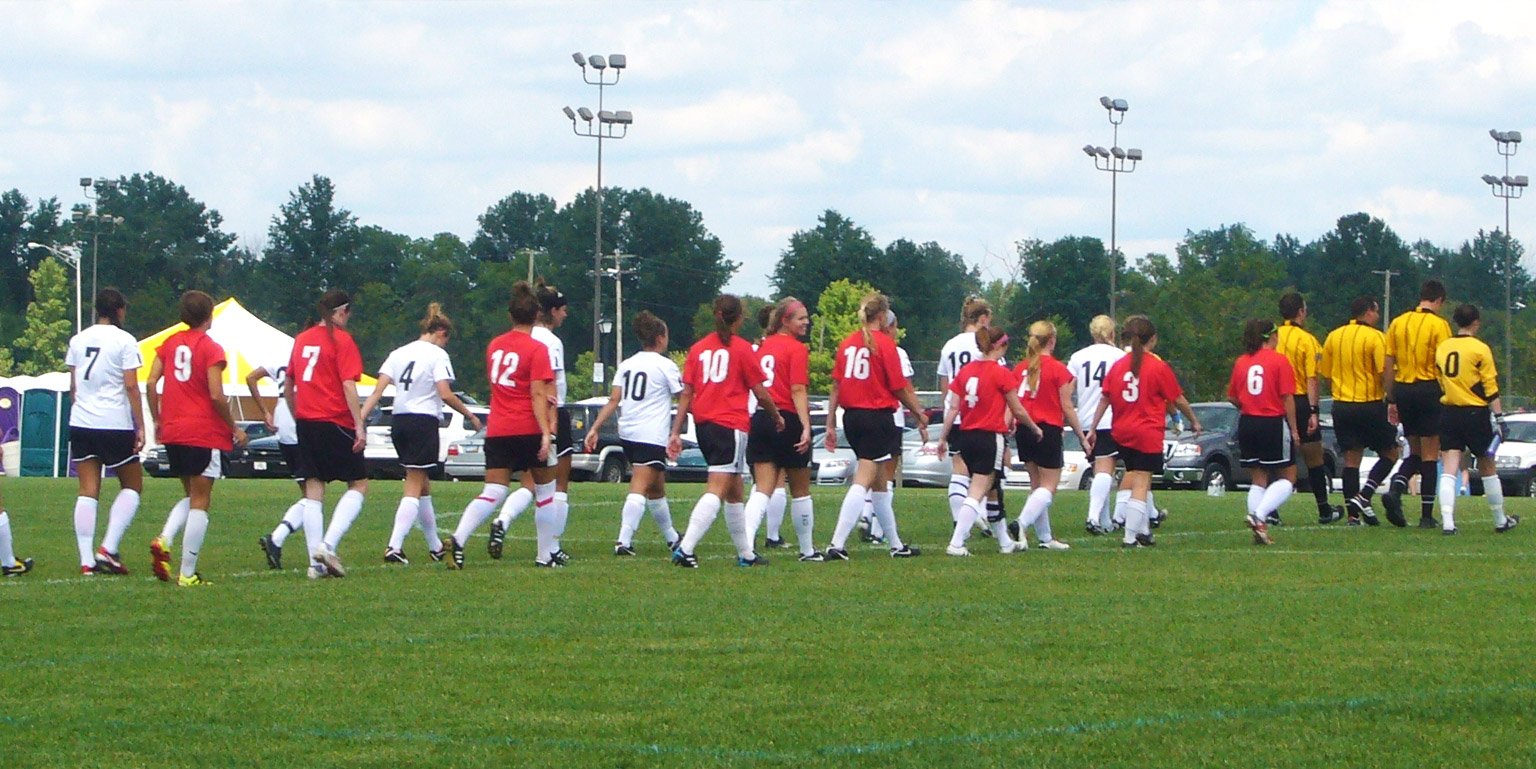This week's installment of U.S. Soccer's ongoing 90-Year Anniversary Articles Series is a look at the "Ironwoman" of U.S. Soccer, Kristine Lilly. Lillyhas amassed a record 249 caps, by far the most ever - male or female - in the history of international soccer, since debuting in just the 16th game in Women's National Team history. And if it seems like Lilly has almost always been on the field for the U.S., that's because she almost has been - missing a mere 31 games in the 280 games played since her debut in 1987.
Kristine Lilly
Kristine Lilly celebrated her 100th cap for the United States in the second-floor lounge of a second-rate hotel in Campinas, Brazil, surrounded by 1970s décor and several greasy sacks full of McDonald’s hamburgers and french fries, which in Campinas, a non-descript city about 60 miles north of Sao Paulo, might have been the high-end option for American cuisine.
But her teammates were there (they got her a cake) and that’s all that Lilly has ever really needed.
Even though she was the first U.S. player to reach 100 caps, there wasn’t much reason to celebrate. After all, she would get 100 more. And she's almost got 50 more after that.
When she got her 200th cap, the scene was a bit different, as she was carried off the field in front of a screaming crowd at Civic Stadium in Portland, Ore., on the shoulders of her teammates after becoming the first soccer player in history, man or woman, to play 200 times for her country. Her amazing accomplishment can partly be attributed to the fact that she started playing international soccer at age 16, but the roots of her amazing longevity, almost ridiculous durability and super-human consistency are to be found in the years before she first played for her country, in the small town of Wilton, Conn.
Lilly was never what you would call a big girl. She was tiny when she was younger and today, she’s still just 5-4, evoking more “you look MUCH bigger on TV” comments than any of her teammates when fansmeet her in person. But she is now, and has always been, the toughest kid on the block.
Wilton is an affluent community located about three hours south of Boston that is classic New England. Wilton is safe, quiet, green, clean and beautiful, with white picket fences or rock walls separating manicured lawns and pristine houses. There is just one high school (its soccer stadium is named Kristine Lilly Field) and it takes about 10 minutes to drive through, so if you were changing CDs, you might miss it.
It is a very orderly place – or at least it was until Kristine, her brother and their four cousins came storming through in the 1970s like the town’s own “Little Rascals.”
How did the world’s most capped soccer player, and one of the best ever, come from a place like Wilton?
Easy. Wilton is a great place for kids to play. And play she did. All day. All sports. All to the point of exhaustion, which meant, of course, beating the boys. Many times football games in the backyard soon turned from touch to tackle.
“When I grew up, I was surrounded by guys,” said Lilly. “And basically whenever we played, I never got treated any differently. I was just one of the boys. I had to be tough. When I fell down, I had to get right up. My brother would always say ‘get up, you’re fine’ and I would. If I ever cried, my brother knew I was really hurt. He was always watching over me, but he let me play hard because he saw that I loved it.”
“There was a difference between her ‘I messed up’ cry, and her ‘I think I broke my leg’ cry,” said brother Scott Lilly, who resides in Trumbull, Conn., not far from Wilton. “I could always tell the difference.”
Scott says Kristine always got to play because with a gang of five boys, they needed her to even up the numbers, but no one ever regretted having her on their side.
“Her toughness really came from our parents,” said Scott, of mom Terri and dad Steve. “They always taught us just to keep going no matter what. Mom was a track runner and a good all-around athlete. Mom and Dad both grew up on the East side of Manhattan. When our dad was young he would play softball, and slide, on blacktop. His version of fun was sewer-to-sewer stickball. We were the same. We just played until dark, and then after dark, we played kick-the-can. You pretty much had to be carried off the field to go in before sundown.”
They played every sport possible in a backyard and had enough room in the basement to shoot soccer balls and hockey pucks and even play an adapted form of tennis. In the winter, it was ice hockey on Faunders Pond.
“We just played hard, we had fun, but we always wanted to win,” remembered Lilly. “As the only girl, whichever team I was on wanted to win because they had a girl on it and whoever played us wanted to win because they were playing against a girl. We literally spent hours outside. If it was the winter, I would come inside with frost-bitten toes.”
Lilly’s best friend since her early teen years, Jodi Morrow, who was a teammate on her high school soccer team, remembers one of her first encounters with the precocious 7th grader. It came in Mrs. Jacobson’s 2nd Period Typing Class at Middlebrook Junior High.
“I only knew of Kristine, but the two of us hadn't met or become friends yet,” said Morrow, now a teacher in the San Francisco Bay Area. “She always had the record in typing class as the fastest typer with the fewest mistakes. I was always impressed by that. As we became friends, I learned that she always did everything aggressively and with a lot of passion, just like she plays soccer.”
A look back at Lilly’s Middlebrook Yearbook would reveal, to no one’s surprise, that Lilly was voted “Best Athlete.” The “Best Typist” award was an unofficial honor.
Lilly’s competitive nature was perfectly suited to the soccer field, where she played with a boys traveling team from 2nd to 8th grade. Lilly remembers that her teammates were always receptive and supportive to the point of refusing to compete at a tournament in Niagara Falls when the organizers wouldn’t let them play with a girl on the team. They packed up and drove back to Wilton.
“The boys would stand up for me if the other team started making fun of me,” said Lilly. “They would come and stand next to me and yell at the other boys. I always felt like I wasn’t alone, that I always had support and because of that I could do anything. I never felt I was any different because I was a girl and that’s one of the reasons I’m so competitive.”
Because Lilly played with boys until she was 13, no one really knew just how good she was. As an above average player on boys’ teams, the years of playing against competition that pushed her mentally and physically honed her skills, paid off when she stepped onto the field with the Wilton High School girl’s soccer team. A star was born.
“She had 21 goals and seven assists as a freshman, and we were like, ‘Wow, that is pretty good,’” said Scott, who kept newspaper clippings from the Wilton Bulletin about his sister’s success on the walls of his Franklin Pierce College dorm.
Soon, more people started to take notice. By the age of 16, she was playing for the U.S. Women’s National Team, earning her first cap against China on Aug. 3, 1987, in Tianjin. Playing alongside her at the time was her current national team coach April Heinrichs.
“When Kristine was first called up to the Women’s National Team, we all knew she was a special player, athlete and person,” said Heinrichs, who captained the 1991 Women’s World Cup Team to the championship with a 19-year-old Lilly starting at flank midfield. “She was one of the young kids that everyone adored. She was quiet and a bit shy, but she was a natural born competitor. And we all knew she was certainly a great soccer player who would help us win. She was a humble, hard-working competitor wrapped into one teammate and instantly we knew there were good things ahead for Kristine Lilly.”
With all the games she’s played in so many different countries on five continents, memories of that first trip to China (she’s since been back six times) are a bit hazy. But she does remember that right away it was an environment that would feed her competitive nature.
“I didn’t play in the first game of that tour (which was against a Chinese club team),” said Lilly. “I remember us young kids were just watching the team play and I was in awe. These girls were so good. I hadn’t watched much high-level women’s soccer, and really, who had at that time, but I thought ‘Oh my God, what I am doing here?’ One of my first practices, I thought I was going to pass out because everyone was going 100 miles an hour.”
Several days later she would debut in just the 16th game ever played by the U.S. women. The USA defeated China, 2-0. Ten days later, she scored her first career goal in just her second game, a 1-1 tie with China.
“I can’t really remember how I felt,” said Lilly of her first cap. “I was nervous, but I wasn’t scared. I was just playing. I was so young I didn’t know much else except just to play.”
Just play. It was a lesson she learned in the backyards, parks, streets and frozen ponds of Wilton and it took her to Kobe, Japan on May 21, 1998, when she played in her 152nd game for the United States, breaking the record for most career international caps previously held by Norwegian Heidi Stoere. As always with Lilly, it was the appreciation of her teammates rather than the record that meant the most to her that day.
“In the pre-game meeting, (then coach) Tony (DiCicco) said something nice in the locker room and the whole team gave me a standing ovation,” said Lilly. “That was the coolest part. You can read all the stuff you want about yourself, but when your teammates respect you, that’s pretty cool.”
One of the most amazing things about Lilly is that for years she was labeled “the most underrated player in the world” until she had so many “underrated” stories written about her that she became highly-rated, at least by the media. Her teammates have always given her high marks.
“I’ve always said that U.S. Soccer has got to find a way to clone her,” said U.S. Women’s National Team captain Julie Foudy. “She has consistently done everything possible to be one of the best players in the world. Her selflessness is remarkable. She’s always the one making the hard run, even if she doesn’t get that ball. She has those same qualities on and off the field.”
In one of her most memorable games, Lilly scored one of the her team’s four goals in a 4-2 victory over Canada on June 6, 1999, earning her 200th cap and a ride on the shoulders of her teammates.
“The 200th cap was great,” said Lilly. “My family was there and they were all wearing T-shirts with the date of my first and 200th caps. The team gave me a beautiful bracelet, we got a big win over Canada and I was just walking off the field when I felt myself rising in the air. I didn’t know what was happening. I was kind of embarrassed, I was waving like a dork, but it was really cool. It’s all about your teammates and they made me feel great that day.”
The left-footed, left-sided midfielder has firmly established herself as one of the top players in the history of women’s soccer with stellar and dynamic play her entire career. Lilly attributes some of her consistency to good genes (her grandma lived to be 92), but also a dedication to fitness, which has been an inspiration for her teammates and helped set the standard on the National Team for many years. And even though it’s against her nature, with so much success behind her, Lilly has finally taken a few moments to glance over her shoulder at her amazing accomplishments.
“Within the last three years, I’ve looked back on my career a bit more,” said Lilly. “I guess when you get older, you start to appreciate your accomplishments more. Things like winning the first World Cup and the first Olympics have more of an impact on you. During my career, it’s always been about the team more than the individual, but now you can look at your career and say, ‘you know what, I’ve done some good things. That’s no so bad.’”
That is about as self-absorbed as Lilly can get, and according to those closest to her, that’s the secret to her success.
“What is the most amazing thing about my sister is that she doesn’t do anything in her life for recognition,” said Scott. “She’s always done what is right, in real life or on the field and that’s why she has become what she is. She has never done anything with any expectations and that demeanor has kept her humble.”
“She's a ‘behind the scenes’ person,” said Morrow. “She’s always looking out for the good of everyone else. She has always made sure that everyone else is taken care of before thinking about herself. She plays soccer that way too. She never wants, or for that matter thinks, that she deserves any credit.”
From the tiny green lawns of Wilton to the massive green fields of soccer stadiums around the world, in many ways, Lilly is still that little girl running and laughing until dark for the love of just playing a game.
“It’s hard for me to believe I’ve played this long. I guess that’s what I’m
most proud of,” said Lilly, who jokes that her caps record could one day be a
Trivial Pursuit question. “Not so much all the games, but the fact that
I’ve been playing for 15 years and that I started most of those games, because
that means that I’ve been consistent. I’ve really enjoyed the ride and I
think that has allowed me to play for so long. Even in the down times,
the love of the game was never lost. That kept me going.”
A complete collection of historical articles will be featured in a limited-edition 90-Year Anniversary Publication, a coffee-table book which will be published for fans and U.S. Soccer constituencies around the time of the organization’s 87th Annual General Meeting in Chicago from Aug. 13-16, 2003.
www.ussoccer.com
Latest News
-
1
FIND YOUR PROGRAM
LSA Developmental (ages 2-7)
LSA (Boys) Competitive (ages 8-19)
LSC (Girls) Competitive (age 8-19)
TOPSocccer (special needs athletes)
Adult Leagues (ages 20+)
-
2
LSA BINGO
FRIDAY'S 10:45AM & SATURDAY'S 2PM
@ J-town Bingo Hall
-
3
LSC BINGO
SATURDAY'S 7PM
@ J-town Bingo Hall


















